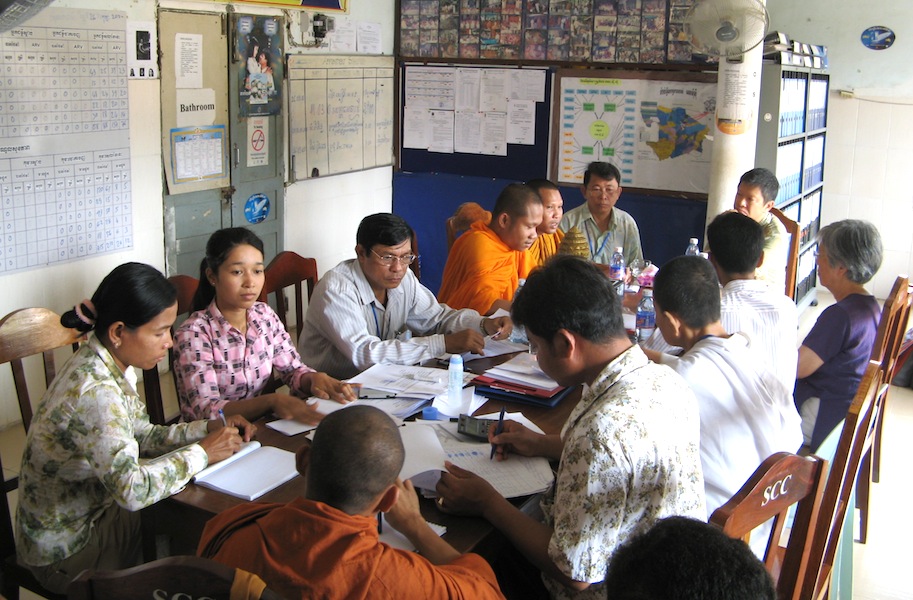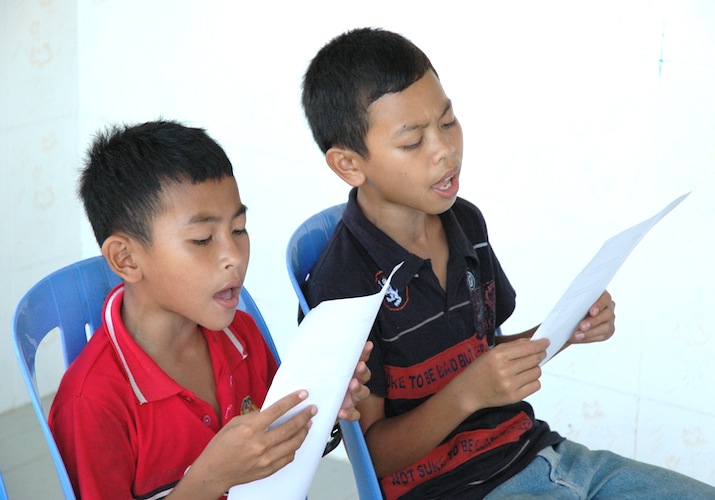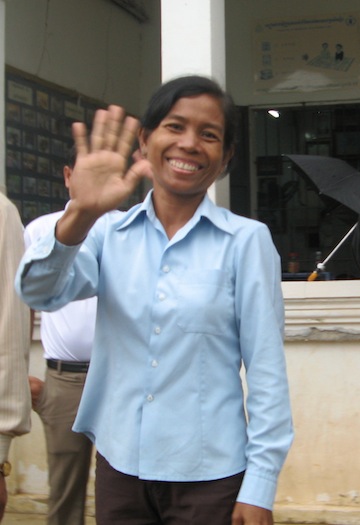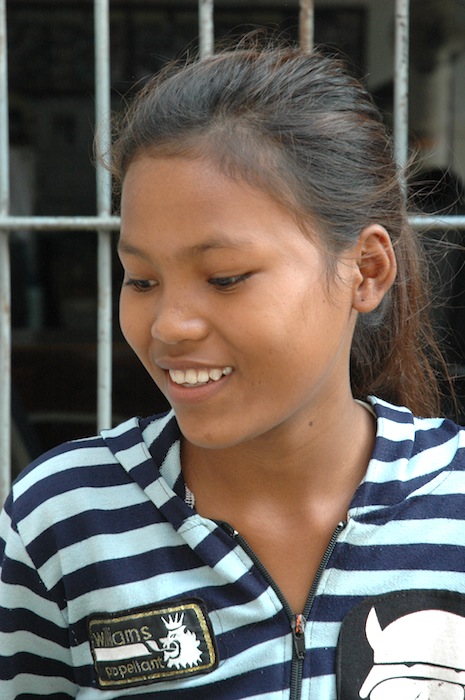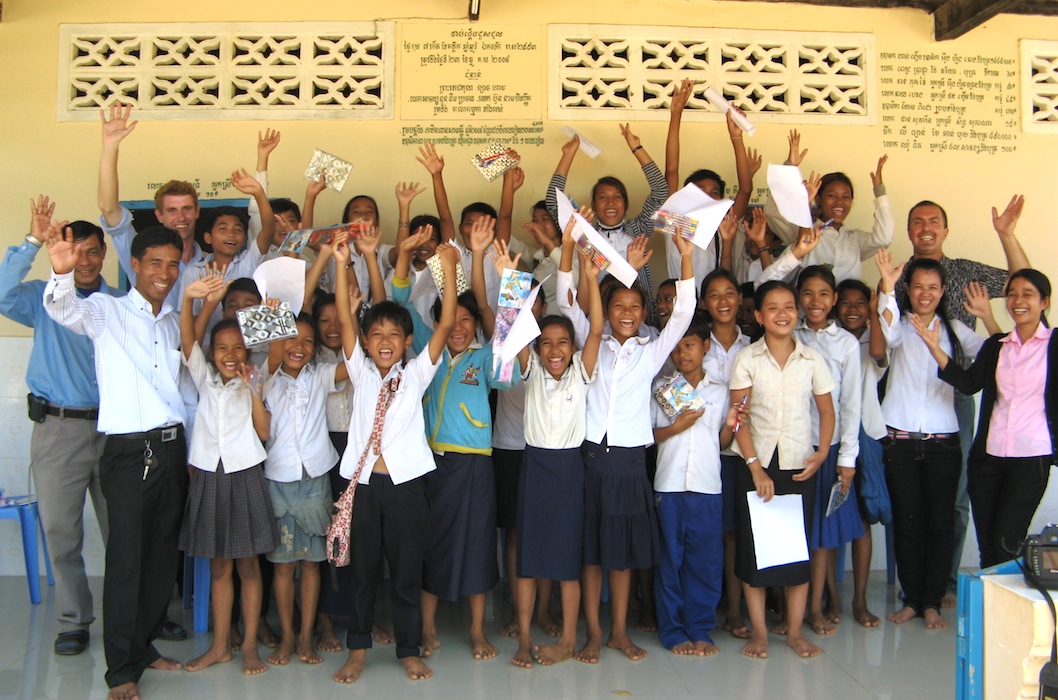How do you say no to one more child?
My Defenses Go Up
I walk into our office on the grounds of a Buddhist temple in Battambang, Cambodia, saying good morning to the staff of our on-the-ground partner organization, the Salvation Centre Cambodia (SCC). They're seated at a long table, including the elderly Buddhist nun, who speaks a few French words, and the young monk, who's in charge of many of our impoverished children.
As I make my way to talk with Sann Pon, the director of this SCC Battambang office, I pass by Ms. Chamroeun, who's responsible for one particular neighborhood. Ms. Chamroeun is talking to a dark-skinned, poorly dressed woman who's surely younger than she looks. Right by this woman's side are two silent, wide-eyed children. I know they must be very poor. And I know what Ms. Chamroeun is going to ask me as she turns toward me -- and as my defenses go up.
Our School for the Very Poor
A year earlier, my Face-to-Face AIDS Project (F2F) and SCC built a community center here in Battambang. One component of the center is a school for the poorest children who'd otherwise struggle to attend the supposedly free public school. Besides the expected costs for uniforms and school materials, families must give their children daily pocket money to pay for homework, tests, exams, grades, and much more. Part bribe, part corruption, part way-of-life-in-Cambodia. A dime here, a quarter there, it all adds up.
Earlier this year, we had 44 registered students and two teachers conducting absolutely free classes in math, English, and Khmer (Cambodian). Our school's mission is to get these poorest children and their families accustomed to going to school, and then staying in school for as long as possible.
We had all sat down and decided that our first priority is to improve the classroom learning experience, a challenging task because the students' abilities range from below grades 4 to around grade 7.
In the two or three years that they're in our school, we want the children to learn to enjoy learning -- to enjoy the discovery. As they build confidence and personality, we hope they'll develop friendships that we'll continue to nurture through youth clubs and vocational groups even after they finish our school program. We want students to recognize that success isn't just defined by grades, but by finding what interests you and being able to pursue that. It could be music, traditional dance, organic gardening, creative sewing, operating a good food stall. It could be taking care of family, or being a teacher. Or maybe even doing community service work.
Our school's annual operating budget is only about $10,000 -- and that's fine, because our goal is creating a school that can be replicated in other poor areas. As we started up this Battambang school, I made it a point to try learning each child's name. It helps me to understand the school better, and it makes the children smile when I greet them, no matter how much I butcher the pronunciation or garble their names.
All the New Faces
When I arrive this past August in Battambang, I try greeting each child by name. But there are lots of faces I don't recognize. I've not a clue as to what their names are. I feel myself becoming annoyed at the situation, and feeling bad for the new students. Hard as I try listening to their names, I knew I was forgetting them right away. In truth, I pretty much forgot their faces right away as well...
I guess I was sensing that the program was running out of control. More students meant it'd be harder to improve the program. More students, more differences in academic levels, same number of teachers, same crowded classroom, same limited budget. Improving the quality of the school experience had been our priority, not increasing enrollment. A little over a year since opening the school, I felt we were headed in the wrong direction.
"I Pitied Them"
"I pitied them." That's how our Battambang director Sann Pon explains how the number of students had increased. "Their parents or guardians bring them here," says Sann Pon, "and they say they're so poor that they don't even have enough to buy food. They have no money for their children to go to school. So I pity them and tell them that yes, we will try to help their children."
Sann Pon spent a good part of his life being a Buddhist monk, during which he worked many years for SCC. When he was promoted to being the director of this Battambang office, he became a lay person in order to devote more time to SCC. Sann Pon is a gentle, hard-working man, and for all intents and purposes lives in our tiny F2F office at the community center. I recognize that Sann Pon is well on his way to making a profound difference in the lives of a huge number of Cambodians --and taking care of Sann Pon is a smart way for us to make the biggest difference too.
So I'm at a loss when Sann Pon looks at me and asks me for advice. No more pitying poor families? Just say no to any new student, no matter the situation?
Not My Best Moment
Back to when I'm walking in the office and there's Ms. Chamrouen (pictured right) and the woman with two children. Ms. Chamrouen turns to me and asks what I know she'll ask.
"Ken, this mother is hoping her two children can come to our school. She's so poor. She can hardly feed her children. Can we register them in our school?
Without hesitation, I respond that this decision is SCC's and not mine, and that SCC has to come up with some sort of enrollment policy. I then quickly make my way to the end of the long table. I avoid looking at the faces of the women or her two children.
I immediately feel bad. It's not one of my better moments.
The New Girl
A few days later, we're visiting the family of two of our students who live nearby. On our way back, I notice one of the new students standing a ways away watching us walk by -- a shy, dark-skinned girl who stood out because she's taller than the others. I remember seeing her smile on a couple of occasions. We stop and talk, and the girl shows us her house, which is just a platform, perhaps 6 feet by 12 feet, that's protected by dried palm leaves on three sides. There's a wide opening, where there might be a door, and above the platform is an actual one-room house. The girl smiles as I take her photo, and promises to be at school on time, which is in about an hour.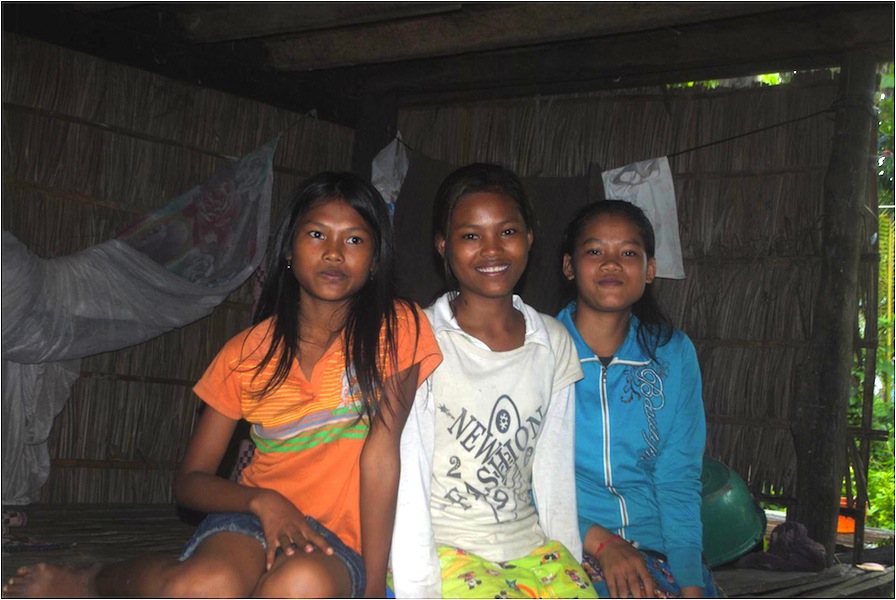
Later, our volunteer from Sydney interviews this girl and discovers that our 15-year-old new student lives with two sisters (flanking her in picture on right; photo: Mitch Farrar), a brother, and a father. For whatever reason, the mother isn't part of the family. The father makes farm equipment, earning about $3.25 a day. When she can, our girl also works long hours taking care of children, earning about $1.25 a day. As common with many of our families, the father often borrows money to buy food and basic necessities.
The five of them live on that cramped, small platform. Ironically, the house upstairs is empty -- and the stairs to the house have been removed.
She Has a Name, and It's Sara
This student, who I sense has a gentle, lovely personality, is in 6th grade. When I look at her photos, I can see an adult, accustomed to responsibility and work. I can also see a young girl with a beautiful smile and, dare I say, with hope in her eyes. Our volunteer tells me her name, which, in Cambodian order where family name comes first, is Rith Sara.
Sara. That's a Cambodian name as well. Now that I know her name, I'm sure I won't forget her for I can see her face clearly in my mind. I hope our school brings Sara happiness and friendship. I hope our school can make a good impact on her life.
I'm glad Sann Pon felt pity for Sara when he let her enroll in our school. It was a simple act of humanity. True, we need guidelines on how many students can be enrolled in our school. But we might also give more weight to expressing humanity than to sticking doggedly to any one policy.
Humanity to go with our priorities. And our priority is to make Sara's experience at our school more engaging, nurturing, and rich with ways that could have a positive influence on the rest of her life. And this goes for any other new Sara as well.
Including those children of Ms. Chamroeun's woman, whose faces I sadly chose not to see.
* * * * * * * * * *
For further information about the Face-to-Face AIDS Project and how you can help support our students in Cambodia, or to donate to the Face-to-Face AIDS Project, please visit the Contact & Donate page at www.facetofaceaids.org. Special thanks to Mitch Farrar of Sydney Australia. All photos taken by author unless otherwise noted.
